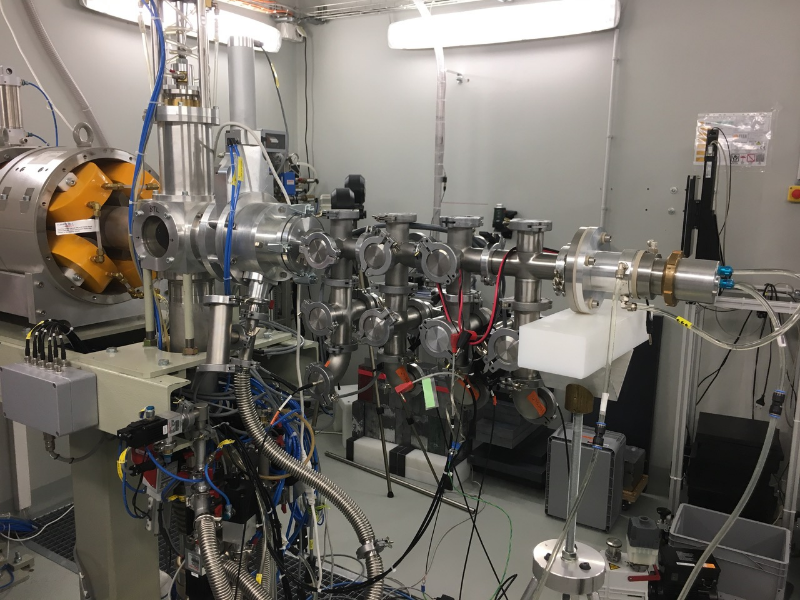Places at the University of Bern
Particle physics in the bunker
Physical research arena by day, medical production site by night: a visit at the Bernese cyclotron laboratory.

From the outside, the unassuming façade of the SWAN-Haus on the Inselspital Bern campus gives no indication of the innovative research going on inside. Downstairs, below palliative care and radiopharmaceutical production, stands the cyclotron, a particle accelerator and the centerpiece of the facility. It is one of three of its kind operated in Swiss hospitals. What is special about the cyclotron in Bern is that it enables medical radioisotope production by the spin-off company SWAN Isotopen AG and multidisciplinary research at the same time.
Subscribe to the uniAKTUELL newsletter

Discover stories about the research at the University of Bern and the people behind it.
Experimenting in the bunker of the particle accelerator
The downstairs laboratory complex is part of a controlled zone that is separated from the rest of the building. The reason: radioactive isotopes are produced with the cyclotron at night for cancer diagnostics. For safety reasons, every person entering the laboratory wears a dosimeter to measure potential radiation. "However, the risk of exposure to radioactivity in the laboratory is very low," assures Saverio Braccini, who is in charge of physics research around the particle accelerator.

The main part of the laboratory consists of two separate bunkers that can be closed off by 2-meter-thick concrete walls on rails. The cyclotron is hidden behind one of these walls. This way, the effects of the produced radioactivity can be contained. In the bright but empty anteroom, only a faint humming and warning signs indicate the activity of the 24-tonaccelerator. Active work is conducted next door in the research bunker, where the "Beam Transfer Line", enables safe physics experiments. Researchers can carry out all work steps themselves: a luxury that is not possible in a large research facility such as CERN.

Fruitful cooperation
«The dual-use of the cyclotron is a win-win-situation between the University, SWAN Isotopen AG and Inselspital», says Saverio Braccini. "For medicine, the accelerator is first and foremost a useful piece of equipment that has to be available for night-time routine production. Thanks to our research, the cyclotron can be used creatively during the day – with the advantage that we can detect and report any observed defects in the machine early on to assure an optimized production for the benefit of the patients."

However, researchers are also combining medicine and physics, for example under the technical term “theranostics”. The aim is to combine cancer diagnosis and therapy in one step in nuclear medicine. The radioactive isotopes produced in the cyclotron are central to this. Although theranostics in cancer care is still in its infancy, it is being driven forward by the unique dual-use character of the Bern cyclotron.
About the person

Saverio Braccini
is associate professor of experimental physics at the University of Bern, where he leads the research group on applications of nuclear and particle physics to medicine at the Laboratory for High Energy Physics (LHEP) around the medical cyclotron at Inselspital Bern.